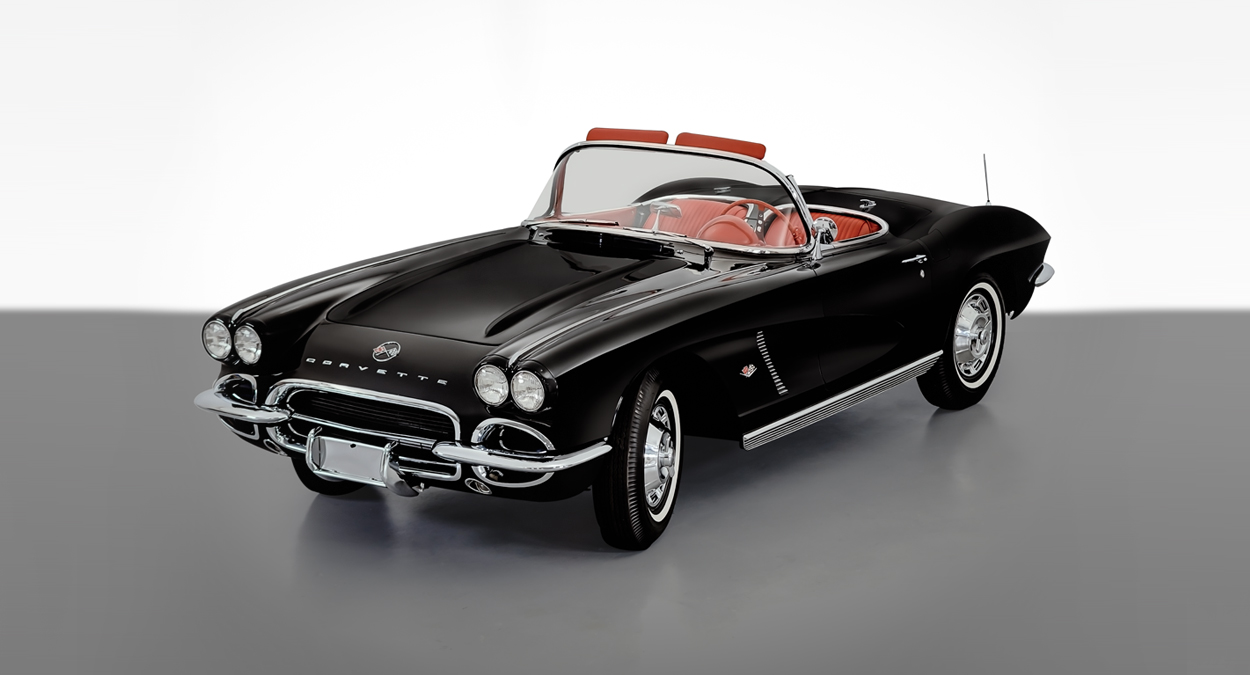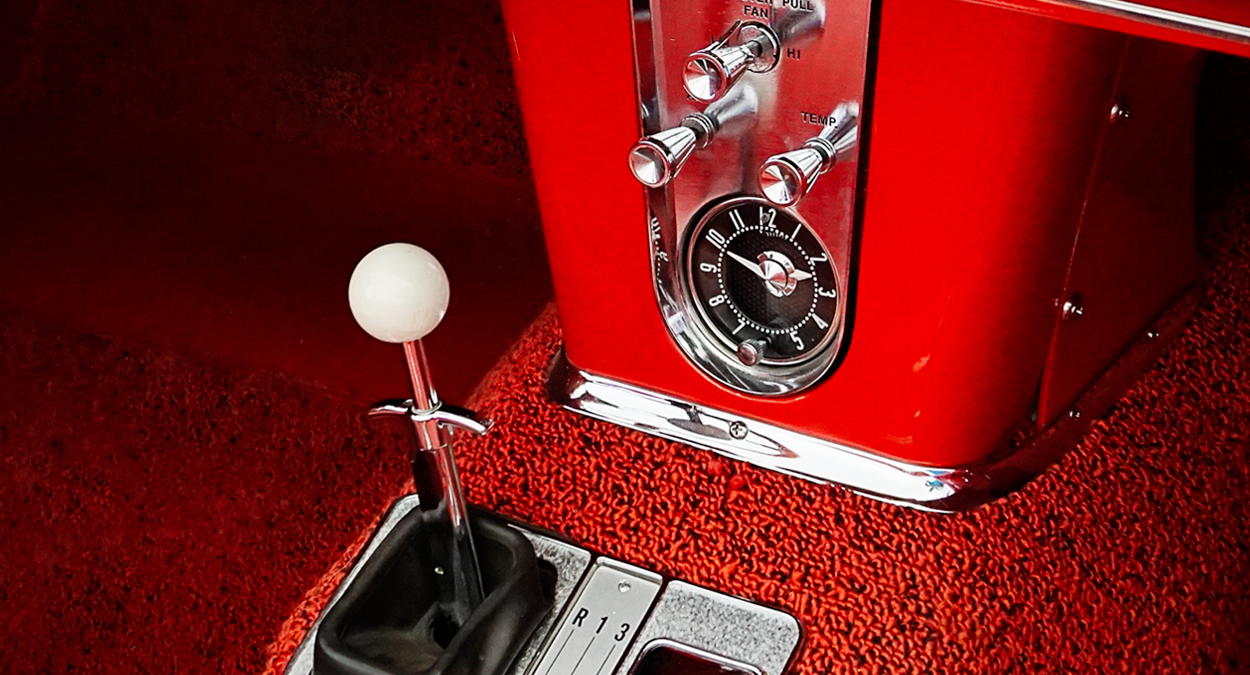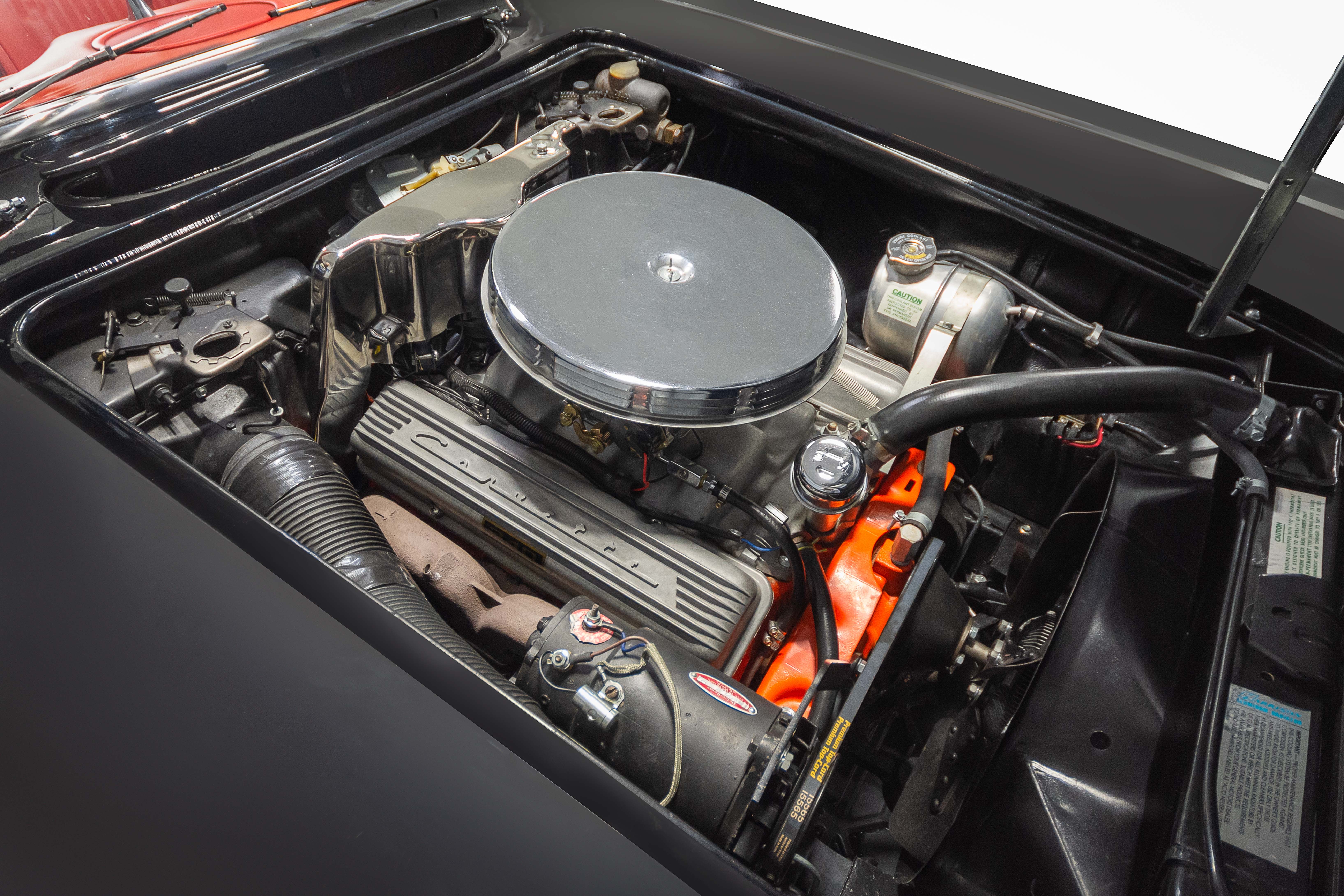

1962 Corvette Convertible
Click any photo to view fullscreen. Mobile users can pinch to zoom. Tap ‘X’ to close.
SPEED
SPECIFICATIONS
- Chevolet Small Block 327 cu-in V8
- Officially Rated at 300 Horsepower
- 3-speed manual transmission (optional 4-speed or Powerglide automatic)
- positraction power-matched rear axle
- Heavy-duty brakes
- Mileage: 57,625
- 3036 lbs.
- 14,531 built – all convertible
1962 Corvette Convertible
The 1962 Corvette C1 is one of the most sought-after Corvettes among car enthusiasts. Making its first appearance in the Corvette’s engine bay was a 327 cu-in small-block engine that consumers just loved and thought of it as a perfect fit for the sports car.
Engine
The ‘62 Corvette was considered the best Corvette of the C1 era. Although the 327 cu-in V8 engine is considered one of Chevrolet’s most iconic small blocks, it was nothing more than the 289 cu-in engine from the year before with a bigger bore and a longer stroke.
Of course, with those extra cubic inches, the now bigger 327 would require more fuel and air. To accommodate those specs, adjustments were made to the Rochester fuel injection, bigger ports for the heads were included with a longer duration solid lifter camshaft named the “Duntov’s” cam.
Making Changes For The C2 Corvette
This Corvette was the end of the C1 era and considered a transformation year. Engineers Edward Cole, Zora Arkus-Duntov, and Bill Mitchell focused on using the Corvette as a platform to show what direction the new C2 Corvette was heading in. The new engine change also brought about a drop in the troublesome 3-barrel carburetor setup from the Corvette’s options for good.
The ‘62 Corvette also was the first year that there was no option to have the famous coves on the Corvette’s fenders and doors painted a different color than the base color for an offset look. The new look in the coves was deleted chrome spares running down the side of the corvette, instead just a set of chrome low-profile non-functional vents on each side. In fact, almost all the chrome-plated trim was either deleted for this final year or painted black for a stealthier-looking sports car. The only place where extra decoration was placed was the rocker panels, which were just updated a little with ribbed anodized aluminum moldings.
A three-piece front grille is accompanied by a front frame-mounted wrap-around bumper. The rear bumper shares the same characteristics, while the front double headlights go with the rear double taillight look. To finish off the new style, an optional white-wall tire is added onto a set of chrome-plated vented wheel covers.
Interior
Standard on the inside were individually adjustable foam-rubber padded all-vinyl bucket seats with standard safety belts. Long padded armrests on each door were also standard along with a competition-type steering wheel and an instrument panel that included a speedometer, tachometer, ammeter, fuel level, oil pressure, and coolant temperature gauges. More standard interior features include turn signals, outside and inside review mirrors, eclectic clock, parking brake alarm, sunshades for driver and passenger, center console storage compartment, locking glove compartment, and ashtray.
Other features were a built-in windshield heater and defroster with easy to reach controls on the center console, a push-button windshield washer with windshield wipers and motor, crank roll-up windows with a power window option, and a transistorized radio.
A Best Seller
Sales of the 1962 Corvette jump nearly 40 percent from the previous year. The ‘62 was faster, handled better, better looking to the consumer, and more of a realistic sports car cruiser than past C1 Corvettes.
The 1962 C1 was the first Corvette to make a huge statement for the General Motors sports car division. This two-seater let consumers know that Corvette was here to stay and stay on top.






